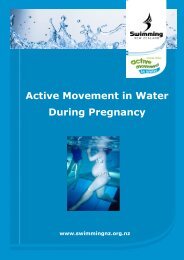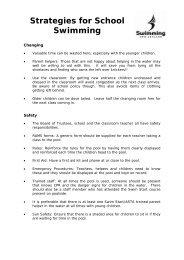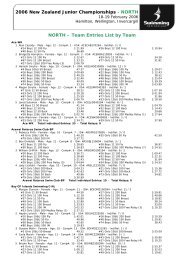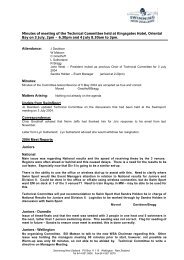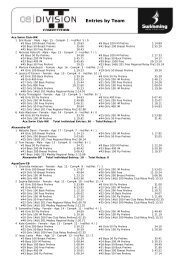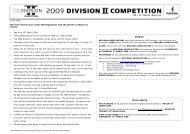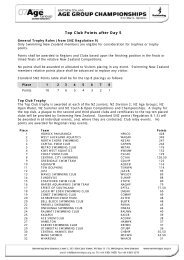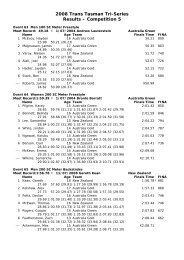SNZ Review - Swimming New Zealand
SNZ Review - Swimming New Zealand
SNZ Review - Swimming New Zealand
You also want an ePaper? Increase the reach of your titles
YUMPU automatically turns print PDFs into web optimized ePapers that Google loves.
Section 6 – <strong>Review</strong> Findings<br />
d<br />
<br />
e<br />
<br />
<br />
<br />
Overall there is no coherent or transparent multiyear High Performance strategy in place to underpin the<br />
development of the sport.<br />
<br />
<br />
follow through of major projects by <strong>SNZ</strong>. Whilst this is true, it is more the symptom than the cause in that<br />
the project issues demonstrate a breakdown of leadership and a failure to take the sport along with the<br />
<br />
to do, the hidden agendas and the conspiracy theories, etc. involved. However, what the Working Group<br />
<br />
by <strong>SNZ</strong>, even if it had the best interests of the sport at heart in seeking to implement core platforms<br />
underpinning the future of the sport and there were no hidden agendas or predetermined outcomes.<br />
<br />
<br />
<br />
<br />
needs to be extensive personal interaction and communication. Often <strong>SNZ</strong> has been perceived as doing<br />
<br />
communication with members in advance of the meeting). However there is a two way responsibility<br />
<br />
tried to consult on with Regions, it either received no replies, or simply received negative responses with<br />
no suggested solutions having been proffered. This is symptomatic of the breakdown in the relationship<br />
between <strong>SNZ</strong> and its members, and the culture that the sport needs to change in order to succeed.<br />
<br />
communication’ and complete transparency, including fronting when things do not go well, explaining<br />
<br />
approach.<br />
<br />
<br />
The size of Regions and Clubs and the access to different funding across <strong>New</strong> <strong>Zealand</strong> results in variable<br />
<br />
variability in leadership throughout the sport. Some Regions have developed their own Strategic Plans and<br />
have formed strong partnerships with Regional Sporting Trusts and have sport development initiatives<br />
underway to grow the sport, while others have not.<br />
There are also different views amongst Regions as to what development support would be welcomed<br />
from <strong>SNZ</strong>, with some Regions looking for help with programs to support such things as Club and coach<br />
development and others saying they do not want centralised interference and see this as disempowering<br />
<br />
<br />
differences.<br />
Finally the inconsistency relates to the number and size of the Regions (from Whanganui with one Club<br />
and 62 members to Auckland with 17 Clubs and over 2000 competitive and Club members). For the<br />
<br />
irrespective of where they live.<br />
6.5. CONCLUSION<br />
The themes from the <strong>Review</strong>’s research and consultation were consistent, with strong agreement on the<br />
issues that need to be addressed.<br />
34<br />
SWIMMING IN NEW ZEALAND – Growing a Cornerstone Sport



